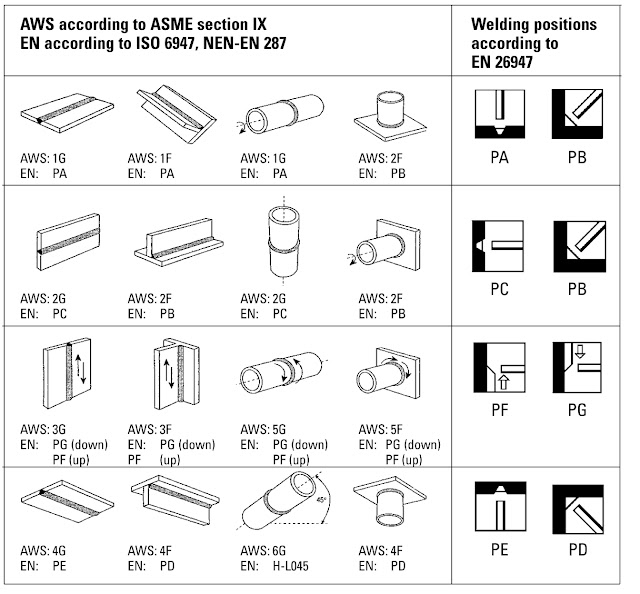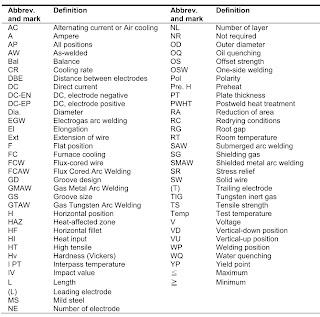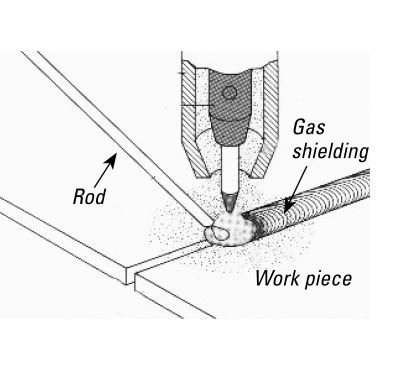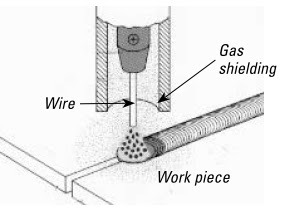Like this:
Like Loading...
B 31.3 is an ASME code for Process piping, Multiple time we come across situation, where we need to calculate the design pressure for a pipe.
In such cases, ASME VIII-Div-1 seems helpless, and B 31-3 comes for rescue.
Clause 304.1.2 talks about Straight pipe under internal pressure,

Where,
P > Internal design pressure
D > Outside diameter of pipe
S > Stress value of material as per table A-1
E > Quality factor from Table A-1A & -1B
Y > Coefficient from table 304.1.1
Compare equation 3a with ASME VIII-1 Formula (UG-27)
The formula is completely same, except factor PY against 0.6 P!
Y factor varies from material & Temperature, which varies from 0.4 to 0.7
As I’m working on one of the project, where I’m manually doing calculation, I thought this will be fastest way to share!
Keep reading!
Like this:
Like Loading...
Scope & Responsibility:
Let’s start with comparing the scope & Responsibilities for various codes.
Following table will give an overview
|
Characteristics
|
ASME VIII-Div-1
|
EN 13445
|
GB-150
|
|
Scope
|
Ref ASME VIII-1 U-1
Pressure Not exceeding 20 MPa U-1(d)
Design by Formula
Minimum pressure 15 psi (g) [1 bar(g)]
Minimum -ve pressure 15 psi (g) [1bar(g)]
|
Refer EN 13445-1: 2009
No limit on pressure
Design by Formula & Design by Analysis
Minimum pressure 0.5 bar(g)
Minimum -ve pressure -0.5 bar(g)
|
Refer GB-150 : 1-1.1
Pressure not exceeding 35 MPa
Design by Formula
Minimum pressure 1 bar(g)
Minimum -ve pressure 0.2 bar(g)
|
|
Responsibility
|
Ref VIII-1 U-2 (b), UG-90
Responsibility of Manufacturer to design complete
vessel as per requirements of Code
19 responsibilities with Manufacturer, 14 with AI
|
Refer EN 13445-1: 2009
Responsibility of Manufacturer, counter signed by
notified body (Independent agency)
Annex – H to be filled & Signed
|
GB-150 : 3, Clause 3.2.2
Responsibility of Manufacturer & Designer to design
complete vessel as per requirements of Code
|
Next Topic Material & Properties!
Keep Watching!
Like this:
Like Loading...
With my next feeds, I’ll be comparing following Code on various aspects
European Code : EN 13445
American Code : ASME Section VIII Div. 1
German Code: AD : 2000
Chinese Code: GB: 150
Keep watching!
Like this:
Like Loading...
After getting my self stablaized in new company… now i’m evaluating the world around.
Filtration is the business, which is common to many needs, and hence it has been seen across the continent
Which brings me to todays discuss, short but sweet, and as usual with a promise to update you more as i learn more about this.
From Pressure vessel point of view, suddenly I’m exposed to number of Code of construction, which includes the old daddy ASME, PD-5500, AD-2000 and new comer like EN 134445. the new code i’m now exposed to is GB-150!
How many of you know this code? and importance?
GB-150 is Pressure vessel code for Pressure vessels in China! it very closely follows ASME, but has its own style! and its governed by Government.
In next few days, i;ll be sharing my finding as i’m all set to compare all these codes.
As an Indian, i like to as Indian Code for pressure vessel IS 2825. mostly its requirement by Gov. agency, but ASME is well accepted here in India, and IS 2825 closely follows PD 5500.
in my next post i’ll be sharing more about the comparison of three codes, ASME, EN & GB
keep reading & Posting!
Like this:
Like Loading...
We talk about type of welds & weld joints, the talk on welding will be incomplete if we don’t talk about weld defect!
Some weld defects are visible, some are visible with aide & some are invisible and need extra process to reveal them.
Before we go into process of different methods to see those defect, one must first know what are those defects?
Let me show you some defects & with their names
Some are Visiable in Radiography!
Burn Thru
Cluster Porosity
Excessive Reinforcement
External Undercut
Internal Undercut
lack of penetration
lack of fusion
Porosity
Suck Back
Tungsten Inclusion
in my next post, will discuss, i ndetail about the Methodology to see these cracks!
Like this:
Like Loading...
Like this:
Like Loading...
Learning Welding doesn’t stop only at knowing welding process.
Followings are more important things selecting welding process :
1. What? What are we welding (Metal type, thickness, chemistry)
2. How ? How are we welding (Welding Position)
3. Where ? where are we welding (e.g in water, near sea shore, inside, outdoor)
We will discuss this in detail, but first we understand the definition & usage of these terms, to start with : Position
Position:
Generally as per ASME IX, following are the mentioned position for groove weld
Flat : 1G
Horizontal : 2G
Vertical Upward/Downward : 3G
Overhead : 4G
Pipe – Horizontal : 5G
Pipr 45º : 6G
For Fillet weld, replace G with F, and there is no 6F applicable!
Like this:
Like Loading...
if you are new… visiting vendor’s place or going for some technical discussion.
Following
abbreviation will help you what “geek” talk they are doing 🙂
Like this:
Like Loading...
Definition
welding noun /ˈwel.dɪŋ/ n [U] the activity of joining metal parts together
(Definition of welding noun from the Cambridge Advanced Learner’s Dictionary)
Welding in industry has huge spectrum! it starts for arc welding, to fusion welding, to Laser and so on and so forth,
Generally, pressure vessel speaking, we use following three type of welding
– SMAW : Shielded Metal Arc Welding
– SAW : Submerged arc welding
– TIG : Tungsten Inert Gas welding
– GMAW : Gas Metal Arc Welding
Other types are
-Atomic Hydrogen Welding(AHW)
-Bare Metal ArcWelding(BMAW)
-Carbon ArcWelding(CAW)
-Electro Gas Welding(EGW)
-Electro Slag Welding(ESW)
-Plasma Arc Welding(PAW)
-Stud Arc Welding(SW)
Lets discuss Generall Welding Process in Brief
SMAW :
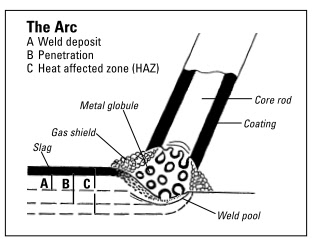
As you can see in picture, the arc is created between Parent material and electrode. The oxidation is avoided by the flux coated on electrode. Due to arc the weld metal start melting, and due to high temperature, the flux also get melted, due to density difference, the flux floats over weld pool, and thus by function makes a barrier between atmosphere & weld to avoid any oxidation.
The temperature found in arc is as high as 7000ºC, at which the gas/air get ionized, providing good electrical conductivity in the arc.
The actual transfer of metal from the electrode to the workpiece is in the form of molten globules of different sizes depending on the type of electrode used. Some electrodes produce globules that are so large that they actually shortcircuit the arc for a moment.
Electrodes for manual arc welding (sometimes referred to as stick welding) consist of a rod and a coating material. As a rule, the alloy in the rod will be similar to the material to be welded.
The most common types of electrodes are:
1. The Organic type (electrodes contain large quantities of organic substances such as cellulose)
2. The Rutile type (electrodes contain large quantities of the mineral rutile)
3. The Acid type (electrodes produce an Iron Oxide / Manganese Oxide / Silica type of slag, the metallurgical character which is an acid.)
4. The Basic type (Low Hydrogen)
5. LMA (Low moisture absorption electrode)
TIG Welding:
In Tungsten Inert Gas welding (TIG), an arc is struck between a Tungsten electrode and the workpiece. An inert gas flow (Argon) protects the electrode and pool from the surrounding air. The electrodes do not melt.The filler metal is inserted into the molten pool in the form of a separate rod. The process has a similar welding technique as gas welding but use electricity as energy source.
GMAW / FCAW Welding
In Wire welding an arc is struck between a continuously fed wire and the workpiece. An inert gas, active gas or a mixture of the two protects the pool from the surrounding air. The wire used can be solid or flux cored. In some cases the flux cored wire is self shielded and does not require any additional shielding gas.
What are not covered? Gas Welding (Oxy-acetelene) and Brazing!
Hope this will give you sufficient over view.
Like this:
Like Loading...



















